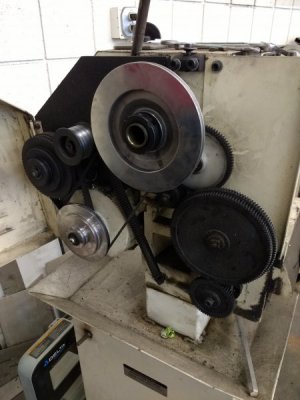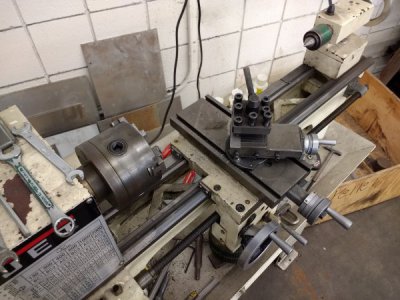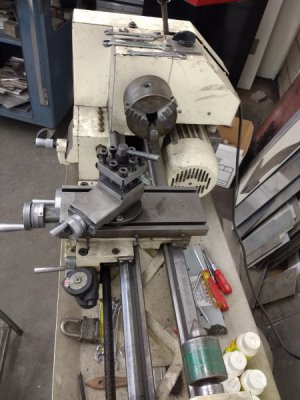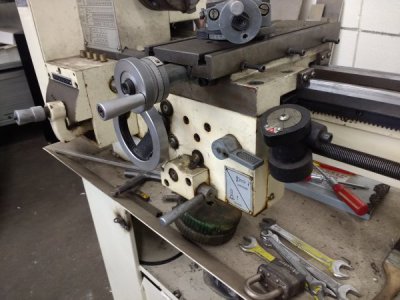I wouldn't expend a lot of effort looking for a G-1550. It went out of production(?) about 1994 when Grizzly replaced it with the G-4000. At half the price. A 1550 was made in Taiwan, a 4000 is still currently made on mainland China. There
is a difference in quality, but I won't go there, I have too much bias.
The Jet is(was) the same source as the 1550, just different paint. Either is comparable to the other. But consider either to be in a higher dollar bracket than most of the other mentioned brands. That includes factory fitting and adjustment. Mine arrived in '92 (thereabouts) dead true with no measurable runout on the chuck. Look in
http://www.hudsontelcom.com/BilzPage2.html for a tale about back gearing one with an old automotive transmission as parts donar. I think a GM, but not too sure.
I noticed in your photo what looks like the 127/120 metric conversion gears. If that's the case, the gears just got a lot cheaper. Now, below the large gear in the photo is what the Chinese consider a "banjo". Loosen the clamp screw and rotate that until the gears mesh. If it is what it looks like, that should get the threading up and running. Provided, of course, there isn't a burr or some other damage in the quick change box. And remember, the photo is a little dark and it's hard to be sure. On the center of the conversion gear is a clip in a groove on the shaft. Remove it and the gears, remembering which one is outside. You should then be able to see what's where. If any parts are needed, you can look at Grizzly, Harbor Freight, and most any machine that has a similar build. For what you want, find whoever has the lowest price.
As far as disassembly, common tools are all that's needed. The issue is getting it all back together
true. The cross slide and headstock truth are the biggest problems there. The user's manual for a G-4000 will cover most of what is necessary. It is free to read on the Grizzly site. Just save to a file. The cross slide requires as much care as the headstock to get right.
For painting; I wouldn't. Unless it's been exposed to some chemical softener. Most of the bare metal I see in the photos is supposed to be bare. And kept with a little oil so it won't get rusty. You ever see a true machinist with clean hands? It's not like accounting. But then my old man was an accountant and his hands always had ink stains. That was back before computers, though. For cleaning, use a good "way oil" and a rag. For really nasty stuff, use kerosene and "scotch-brite" to scrub it. As a
rule, avoid WD-40. The WD stands for water displacer. A good solvent but useless as a long term lubricant. The paint should be clean, but not so shiny as to comb your hair in the reflection. From what I see, just clean it up and don't worry about it.
I've rambled on enough here. Look to my website for some insights to the machine and what it is capable of.
EDIT: As an afterthought, the photos of the machine down the road don't show the inside of the gear train. It looks good though. And, if it has all the goodies you need, should do the job. But if you're considering it, look beyond the "brand". Perhaps an older Atlas or Craftsman 6 inch machine would do as well. Some work to get up to speed, but made in the U.S. and still highly regarded by anyone that has one.
Bill Hudson








